Professional Engineer's Analysis of
Tribometers and Coefficient of Friction
Professional Engineer Expert Witness
Serving Manhattan,
Queens, Brooklyn, Bronx,
Staten Island, Nassau, Suffolk,
Rockland, Putnam,
and Westchester
 Today's
messages:
📆
Today's
messages:
📆
Happy
New Year 2024!
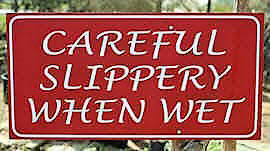 Tribometer (sometimes called a slipometer) coefficient of friction measurements can be easily manipulated. Professional Engineers can determine the actual cause(s) of a slip, trip, and fall accident without relying on questionable coefficient of friction measurements. A Professional Engineer can also determine which Codes and Standards are violated, whether the hazard was created by the owner, whether a pedestrian injury is foreseeable, etc. The Professional Engineer also serves as an expert witness when necessary.
Tribometer (sometimes called a slipometer) coefficient of friction measurements can be easily manipulated. Professional Engineers can determine the actual cause(s) of a slip, trip, and fall accident without relying on questionable coefficient of friction measurements. A Professional Engineer can also determine which Codes and Standards are violated, whether the hazard was created by the owner, whether a pedestrian injury is foreseeable, etc. The Professional Engineer also serves as an expert witness when necessary.
Pedestrians slip, trip, and fall on walkways, sidewalks, paths, parking lots, steps, and stairways for many reasons. Among the more common reasons are clumsiness, a slippery surface, not paying attention, and defects in the surface or steps where the pedestrian fell. Many pedestrians walk in places where there are defects, but not all slip, trip, and fall injuries occur because of negligence.
Slip, Trip, and Fall Accidents
This is not a criticism of the concept of coefficient of friction measurements or a comment on their value when properly used. This discussion applies to the widespread misuse of coefficient of friction measurements in evaluating slip and fall incidents. This is not applicable to properly made slip resistance measurements used, for example, by flooring manufacturers.
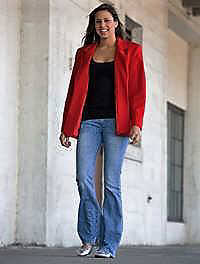 Coefficient of friction is the ratio of the force of friction between two bodies and the force pressing them together. Static friction is the friction force when an object is not moving. Static friction is the force that prevents a block from sliding down an incline. Kinetic friction (also called dynamic friction) is the force when two objects are moving relative to each other. Generally, the kinetic coefficient of friction is less than the static coefficient of friction.
Coefficient of friction is the ratio of the force of friction between two bodies and the force pressing them together. Static friction is the friction force when an object is not moving. Static friction is the force that prevents a block from sliding down an incline. Kinetic friction (also called dynamic friction) is the force when two objects are moving relative to each other. Generally, the kinetic coefficient of friction is less than the static coefficient of friction.
Coefficient of friction and slip resistance are often used interchangeable. Although they are related concepts, they are not identical. Slip resistance is what one is looking at in slip and fall incidents.
A slippery surface can cause a pedestrian to slip and fall. Years ago, a block of a known weight was dragged across the surface to measure the static slip resistance. However, slip, trip, and fall incidents occur when pedestrians are walking, so the dynamic slip resistance appears to be more appropriate.
A Tribometer is a device for measuring tribological quantities. Tribology is the science of the interaction between surfaces in motion relative to each other. Tribology includes the application of the principles of friction, lubrication, fluids and fluid flow, materials properties. In slip and fall incidents, human dynamics and human reaction to a perceived loss of friction play a significant roll. Tribology includes mechanical engineering, materials science and engineering, fluid flow, physics, and chemistry. When analyzing slip and fall incidents using tribology, human factors must also be included.
Click here for a history of tribology
Click here for a brief history of tribometers
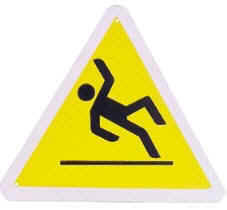 Various methods of measuring dynamic slip resistance have been devised and some have been accepted by Courts. In many cases, these measurements are made by self-proclaimed safety experts. The device used to make these measurements is often referred to as a Tribometer (sometimes called a slipometer), although there are other trade names by which a Tribometer is called. In some cases, Courts and Insurance companies have accepted these measurements blindly, and used them to decide negligence or pay a settlement.
Various methods of measuring dynamic slip resistance have been devised and some have been accepted by Courts. In many cases, these measurements are made by self-proclaimed safety experts. The device used to make these measurements is often referred to as a Tribometer (sometimes called a slipometer), although there are other trade names by which a Tribometer is called. In some cases, Courts and Insurance companies have accepted these measurements blindly, and used them to decide negligence or pay a settlement.
Tribometers do not slip and fall. Pedestrians slip and fall. It is important to remember this when looking at Tribometer slip resistance measurements. There are many problems with blindly taken dynamic slip resistance measurements:
- There is no objective standard for measuring coefficient of friction on existing steps, paths, walkways, floors, driveways, etc. Standards exist for the measuring the coefficient of friction of manufactured flooring, and these standards have been misapplied to existing construction.
- Many pedestrians do not know exactly where they fell, or where their foot was located at the moment they fell. The measured coefficient of friction can be different at different points on a surface.
- The measuring devices often do not accurately reproduce the conditions when the pedestrian fell. The operator of the measurement device cannot accurately reproduce the motion of the person's foot before the slip, trip, and fall incident.
- The coefficient of friction measurement can be influenced by the person taking the measurement. Based on irregularities in the surface, one can set up the Tribometer to show a higher or lower coefficient of friction measurement.
 The image on the right shows three ways of taking a measurement on a the same curved surface. The arrows represent the location and direction of the force applied by the Tribometer:
The image on the right shows three ways of taking a measurement on a the same curved surface. The arrows represent the location and direction of the force applied by the Tribometer:- The yellow arrow shows a coefficient of friction measurement taken on an upward-sloped surface. This measurement will be high because the Tribometer will hit against the upward-sloped surface.
- The orange arrow shows a coefficient of friction measurement taken on a downward-sloped surface. This measurement will be low because the Tribometer will slide on the downward-sloped surface.
- The green arrow shows a coefficient of friction measurement taken on a flat surface. This measurement will be between the upward-sloped surface and the downward-sloped surface.
- The actual coefficient of friction depends on the pedestrian's footwear. Often, the measurement is taken with a generic material.
- Because of irregularities in the surface, the size of the contact area is critical. A pedestrian's shoe may be contacting different sections of a surface with different slip resistance measurements.
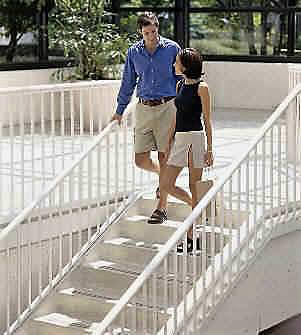 Many pedestrians slip on wet surfaces, so it has become a common practice to pour water on a surface and measure the coefficient of friction. The quantity of water and impurities in the water can influence slip resistance. Spilling a cup of water on a surface does not accurately reproduce the conditions that existed when a pedestrian fell. All that is often determined is that a wet surface is more slippery than a dry surface.
Many pedestrians slip on wet surfaces, so it has become a common practice to pour water on a surface and measure the coefficient of friction. The quantity of water and impurities in the water can influence slip resistance. Spilling a cup of water on a surface does not accurately reproduce the conditions that existed when a pedestrian fell. All that is often determined is that a wet surface is more slippery than a dry surface.- The Tribometer does not accurately measure the coefficient of friction on a wet surface even if the exact liquid and floor conditions can be reproduced. This is because the dynamics of the Tribometer on a liquid surface are considerably different than the dynamics of a pedestrian's footwear.
- Coefficient of friction measurements do not take into account hydroplaning-type phenomenon. (Hydroplaning and aquaplaning are generally reserved for the behavior of rolling objects like tires). Hydroplaning occurs when a film of water builds up between a tire and the road, causing the tire to loose contact with the road. A similar phenomenon occurs when there is a layer of water between a pedestrian's shoes and a floor.
- Coefficient of friction measurement ignores the fact that when a human being walks, it is a feedback process. The human gait is a closed-loop feedback system, where the brain makes adjustments based on expected conditions and conditions found. Measuring the dynamic slip resistance ignores the feedback part of a human's walk.
In some cases, measurement of coefficient of friction has replaced an evaluation of the defects and cause of the slip, trip, and fall accident by a Professional Engineer. Just measuring the coefficient of friction without determining why a pedestrian slipped and fell is bad engineering.
The Harold Krongelb PE does not use questionable coefficient of friction measurements in evaluating the cause of a slip, trip, and fall injury. Rather, actual defects in the design or maintenance are reported. In many cases, these defects are code violations that provide objective evidence as to the cause of the slip, trip, and fall injury.
Harold Krongelb, P.E.
 Harold
Krongelb, P.E. performs Engineering inspections where litigation or arbitration
is being considered. Harold Krongelb, P.E. is a State of New York Licensed
Professional Engineer with extensive experience in the preparation of reports, the
preparation of affidavits for summary judgment and other court motions, and testimony
experience. Harold Krongelb, P.E. is a Board-Certified
Diplomate in Forensic Engineering from
The National Academy of Forensic Engineers.
Harold
Krongelb, P.E. performs Engineering inspections where litigation or arbitration
is being considered. Harold Krongelb, P.E. is a State of New York Licensed
Professional Engineer with extensive experience in the preparation of reports, the
preparation of affidavits for summary judgment and other court motions, and testimony
experience. Harold Krongelb, P.E. is a Board-Certified
Diplomate in Forensic Engineering from
The National Academy of Forensic Engineers.
Harold Krongelb, P.E. has experience with slip, trip, and fall incidents, playground incidents, injuries caused by falling ceilings, injuries caused by other building defects, injuries caused by sports equipment, and other Engineering-related analysis, reports, and court testimony. Harold Krongelb, P.E. also has experience with building codes, engineering analysis when only photographs and depositions are available, assessment based on historical codes and images, computer systems, and other areas of Engineering.
To contact Harold Krongelb, P.E. call 516.434.9763 or email HKrongelb@professional-engineer.com
Information on Harold Krongelb, P.E.
Building Code Resource Information
Proximate or Substantial Cause
Proximate cause is often defined as the immediate or closest cause. Substantial cause can be defined as being a significant factor or contributing significantly to an incident. When examining a site or building where a personal injury occurred, it is important to determine the proximate or substantial cause of the incident. Some Engineers cite irrelevant deficiencies as the cause of an incident. For example, if a client falls at the top of a set of steps, hazards near the bottom of the steps are irrelevant.
There are many experts who look to find any defect or hazard and never determine if it is the proximate or substantial cause of the accident. It is important that only relevant defects, hazards, and codes are included in reports. Engineering reports that include irrelevant information may look good at first, but these reports can be defeated in summary judgment.
The Laws of Physics
Do Not Change
A Professional Engineer's report or affidavit needs to reflect the Engineer's professional opinion based on well-accepted scientific, engineering, and mathematical principles. Common sense is also an important component in an Engineer's analysis. If your case is based on "facts" that do not obey to the laws of physics, revisit the case. The laws of physics do not change because of your client's testimony. This is a critical point when writing a report or an affidavit.
Conditions Changed?
No Problem
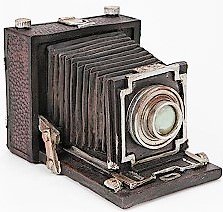 About
40% of the personal injury consultations are regarding hazards and defects that
no longer exist. Another 45% of the personal injury consultations are regarding
conditions that are either transient or have had some changes even though the hazard
or defect has not been corrected. In only 15% of the personal injury consultations
are the conditions unchanged.
About
40% of the personal injury consultations are regarding hazards and defects that
no longer exist. Another 45% of the personal injury consultations are regarding
conditions that are either transient or have had some changes even though the hazard
or defect has not been corrected. In only 15% of the personal injury consultations
are the conditions unchanged.
For some personal injury consultations, access to the premises is denied without multiple court orders, is provided with restricted access to hinder the site examination, or the defendant delays the site access to the point where a report needs to be issued without a site examination.
Many personal injury consultations must rely (at least in part) on photographic images. As long as the photographic images fairly and accurately represent the site as it existed at the time of the incident, a Professional Engineer's report detailing hazards and code violations can be created.
Professional Fees
 You
will be quoted a fixed fee based on the information provided. There is no extra
fee for answering your questions on the phone. If you request an increase in the
scope of the consultation, additional fees are always discussed before any Engineering
work is performed. You know the expected fee for the professional services when
work is started.
You
will be quoted a fixed fee based on the information provided. There is no extra
fee for answering your questions on the phone. If you request an increase in the
scope of the consultation, additional fees are always discussed before any Engineering
work is performed. You know the expected fee for the professional services when
work is started.
Professional Engineers are prohibited from working on a contingency basis. Professional Engineers are prohibited from engaging in fee-splitting, which means no referral fees are ever paid.
Trivial Defects
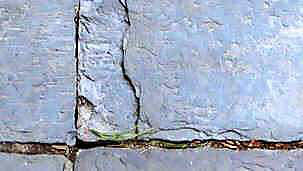 De
minimis means too trivial or unimportant to be considered. A de minimis defect is
a defect that a defendant is arguing is too small to be considered as the cause
of the accident and injury.
De
minimis means too trivial or unimportant to be considered. A de minimis defect is
a defect that a defendant is arguing is too small to be considered as the cause
of the accident and injury.
Who decides if a defect is de minimis? Is it decided by Attorneys, the law, or the Engineer? Engineers need toconsidert whether a defect is trivial in determining the proximate cause or substantial cause of the incident and subsequent injury. It a Professional Engineer determines that a defect is the proximate cause of an incident, then the defect is not trivial.
Foreseeable Incidents and
Reasonable Care
The cause of injury is often the defendant's failure to use reasonable care in the maintenance or repair of a building. Engineers need to look at the site conditions, and determine if the owners created a defect or hazard by failing to use reasonable care. It is also important to determine if it is foreseeable that the condition could cause an injury.
Engineers and Medicine
 Professional
Engineers are not Physicians and cannot provide
a medical diagnosis or medical advice. However, it is important for Professional
Engineers performing personal injury consultations to have a basic understanding
of the mechanism of injury, how a human responds in different situations, how different
medical conditions are treated, etc. Often it is necessary to read documents written
by first responders, nurses, and doctors to understand the connection between an
injury and a hazardous condition.
Professional
Engineers are not Physicians and cannot provide
a medical diagnosis or medical advice. However, it is important for Professional
Engineers performing personal injury consultations to have a basic understanding
of the mechanism of injury, how a human responds in different situations, how different
medical conditions are treated, etc. Often it is necessary to read documents written
by first responders, nurses, and doctors to understand the connection between an
injury and a hazardous condition.
Professional Engineers are not Medical Doctors, and are not providing medical opinions on the treatment of an injury.; However, a Professional Engineer should obtain all relevant information, including medical information, to provide a professional opinion as to the cause of a personal injury.
Engineer Experts or Hired Guns?
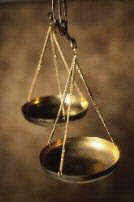 Some
Professional Engineers are "hired guns". These expert witnesses provide a report
in favor of their client regardless of the facts, the laws of physics, or reality.
It hurts to exaggerate or embellish findings. If there is no defect, that is what
the Professional Engineer must tell you. There are Attorneys who will never use
my services because I do not embellish the reports
in favor of their clients.
Some
Professional Engineers are "hired guns". These expert witnesses provide a report
in favor of their client regardless of the facts, the laws of physics, or reality.
It hurts to exaggerate or embellish findings. If there is no defect, that is what
the Professional Engineer must tell you. There are Attorneys who will never use
my services because I do not embellish the reports
in favor of their clients.
Embellishing a report or relying on code references that are not applicable may work if an insurance company settles based on an inaccurate report. In other cases, the expert's statements in the inaccurate report cannot stand up to summary judgment or under cross-examination in a Court of Law. Harold Krongelb, P.E. provides a professional opinion based on the reality that should hold up to summary judgment or under cross-examination.
Words are Important
 It
is important to know what to say, what not to say, and how to phrase findings. Judges
typically do not accept medical, psychological, legal, financial, etc. professional
opinions from Engineers. Yet some Engineers routinely provide these opinions in
their reports. These non-Engineering opinions often do not hold up under summary
judgment.
It
is important to know what to say, what not to say, and how to phrase findings. Judges
typically do not accept medical, psychological, legal, financial, etc. professional
opinions from Engineers. Yet some Engineers routinely provide these opinions in
their reports. These non-Engineering opinions often do not hold up under summary
judgment.
It is important not to make statements that might be misinterpreted as being beyond the scope of a Professional Engineer's expertise. Even an otherwise well-written report can be thrown out in summary judgment if an otherwise accurate statement is misinterpreted.
Everything in the reports is designed to stand up to summary judgment and under cross-examination during trial. This has been tested during many court trials and summary judgment decisions.
"Old School" Engineers
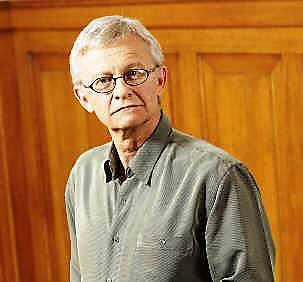 After
World War II, Engineering moved from war-related work to developing products
for consumers and of national interest (such as the space program). There were few
universally accepted standards other than building codes and mechanical standards
such as standard screw and wire sizes. Many Engineers who graduated before the mid-1970s
created their own standards, often changing these standards from project to project.
After
World War II, Engineering moved from war-related work to developing products
for consumers and of national interest (such as the space program). There were few
universally accepted standards other than building codes and mechanical standards
such as standard screw and wire sizes. Many Engineers who graduated before the mid-1970s
created their own standards, often changing these standards from project to project.
Although organizations such as the American National Standards Institute (ANSI) began developing standards after World War I, many of these standards did not acquire the force of law or become well accepted practices until the 1960s. In addition, organizations such as the Environmental Protection Agency (EPA) and the National Highway Traffic Safety Administration (NHTSA) set and enforced standards. Organizations such as ANSI and the Consumer Product Safety Commission (CPSC) set standards that may not have the force of law, but are universally followed.
Some "Old School" Engineers retired from full-time employment to become consulting Engineers. These "Old School" Engineers approached accident investigations like they had worked their whole life. The result was reports that reflected the "Old School" Engineer's standards or the Engineer's interpretation of Building Codes without regard to the realities of how the Department of Buildings interprets codes or good and accepted practices.
An example of the difference between old self-created standards and newer standards can be seen in the change in automobile safety in the last 50 years. In the late 1950s, automobile manufacturers advertised how safe their cars were. The standards for safety were set by automobile manufacturers. In the late 1950s, General Motors stated their cars had a "safety X-frame" in advertising.
The Insurance Institute for Highway Safety released a video in 2009 that showed a frontal offset collision between a 1959 Chevrolet Impala and a 2009 Chevrolet Malibu. Analysis after the collision showed that the driver of the 1959 Impala would have died instantly, and the driver of the 2009 Chevrolet Malibu might have sustained a knee injury. Video of a 1959 and a 2009 Chevrolet Impala Collision
This video illustrates the difference between self-created standards based on a few theories and well-developed, well-tested, and well-accepted standards. By the self-created standards of 1959, the Impala was "safe". By today's standards, the 1959 Impala offers little passenger protection.
When choosing a Professional Engineer, be careful of Engineers who define their own standards. While they may sound good, their testimony will hold up no better under cross-examination based on today's standards than the 1959 Chevrolet Impala held up against the 2009 Chevrolet Malibu.
Accident or Incident
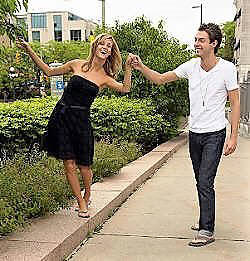 Accident
has no clear meaning. An accident could be an injury caused by a property owner's
negligence. An accident could be a mistake by the injured party. An accident could
be caused by a contractor's negligence.
Accident
has no clear meaning. An accident could be an injury caused by a property owner's
negligence. An accident could be a mistake by the injured party. An accident could
be caused by a contractor's negligence.
A Professional Engineer evaluates incidents. Someone is injured, which is the incident. It is only after the incident is evaluated that the cause of the incident and negligence can be established.
When an incident is evaluated, there should be no preconceived notion of who is responsiblle, why they are responsible, or how the defect or hazard was created. An incident should be evaluated in a methodical and unbiased way, including the application of well-accepted scientific, engineering, and mathematical principles. Only after all the facts related to the incident are determined can negligence and blame be determined. It is noteworthy that this approach often finds a much more significant defect and yields a much better case for your client.
Sidewalks, Stairways, Paths,
and Means of Egress
A trip and fall on a public sidewalk is different than a trip and fall on a stairway, ramp, or other required means of egress. The standards and applicable codes are often different. Sidewalks by their nature have irregularities and pedestrians need to exercise reasonable care. A concrete path that is part of a required means of egress may be held to a higher standard than a sidewalk along a street. A Professional Engineer needs to determine which codes and standards are applicable.
Building Codes and
Engineering Standards
It is important to determine which codes, regulations, and standards are applicable to a specific incident. When a building is constructed, it is constructed under the codes, regulations, and standards that are in force at the time of construction. Harold Krongelb PE has an extensive searchable library of historical codes is available and includes:
-
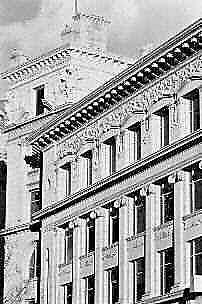 1877,
1892, 1899, 1901, 1906, 1916, 1938, 1968, 2008, 2014, and 2022 City of New York
Building Code (including amendments).
1877,
1892, 1899, 1901, 1906, 1916, 1938, 1968, 2008, 2014, and 2022 City of New York
Building Code (including amendments).
- 1951, 1954, 1959, 1964, 1972, 1978, 1984, 2004, 2010, 2015, and 2020 State of New York Building Code (including amendments and construction manuals)
- 1938 FHA Construction Standards
- 1907, 1909, 1915, 1922, and 1934 Fire Underwriters Model Code
- State of New York Multiple Dwelling Law
- State of New York Tenement Law
- City of New York sidewalk regulations
- Electrical Codes
In addition, there are numerous standards that have been published by many different organizations. These standards can help, but a Professional Engineer must be cautious when applying them. For example, a national standard for the measurement of slip resistance of a surface was withdrawn when it became apparent that the standard was nothing more than a sales promotion for one manufacturer's testing device.
Most important is knowing which codes and standards apply to which locations. If irrelevant codes are cited, the Professional Engineer's report is of little use.
Codes, regulations, and standards change over time and modifications are made to existing buildings and sites. It is important to examine the available history of the building to determine what codes, regulations, and standards are applicable.
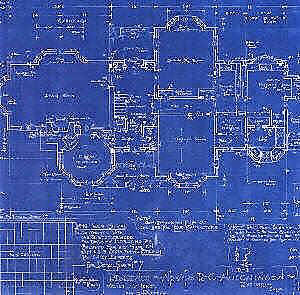 The
term grandfathered is often applied to existing construction. Saying a
building is grandfathered is often inaccurate. Grandfathered only
applies to original unaltered construction. Grandfathering requires that
no changes were made without required permits and approvals. Once a change is made
to a building, newer building codes, standards, and municipal regulations become
applicable. For example, making a change to the interior of a building might require
that exterior steps be brought up to modern codes. Just because a building complied
with the applicable codes at the time it was constructed does not mean that hazardous
defects are permitted.
The
term grandfathered is often applied to existing construction. Saying a
building is grandfathered is often inaccurate. Grandfathered only
applies to original unaltered construction. Grandfathering requires that
no changes were made without required permits and approvals. Once a change is made
to a building, newer building codes, standards, and municipal regulations become
applicable. For example, making a change to the interior of a building might require
that exterior steps be brought up to modern codes. Just because a building complied
with the applicable codes at the time it was constructed does not mean that hazardous
defects are permitted.
Even if the building or site is unaltered, it may not have complied with the codes, standards, and regulations in effect at the time the building was constructed. Many older codes, regulations, and standards are not as clearly written as their more modern counterparts.
The Engineer needs to consider both the wording and the correct application of the code, regulation, and standard. In addition, the injury may have been caused by faulty maintenance, which may be a violation of current codes.
Just because a building complied with the applicable codes at the time it was constructed does not mean hazardous defects are permitted. Failing to maintain a building or site in a safe condition is never grandfathered.
Expert Witness Court Testimony
by
Professional Engineer
Harold Krongelb, P.E.
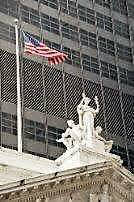 Clearly
written reports help make it clear how defects and hazards at a site contributed
to an accident and injury. Clearly written accurate reports can help you settle
a case and avoid the time, expense, and uncertainty of a trial.
Clearly
written reports help make it clear how defects and hazards at a site contributed
to an accident and injury. Clearly written accurate reports can help you settle
a case and avoid the time, expense, and uncertainty of a trial.
If the case has to be litigated in a court of law, Harold Krongelb PE has served as expert witness and has qualified as and expert witness in United States Federal Courts and at all levels of State of New York Courts.
For questions regarding Professional Engineer expert witness services, call Harold Krongelb PE at 516.434.9763 or email HKrongelb@professional-engineer.com.
Professional Engineer Expert Witness
Inspection Info
ProfessionalEngineer
Expert Court Testimony
Slip, Trip, and Fall
Investigations
Stair Slip, Trip, and Fall
Investigations
Parking Lot Trip and Fall
Investigations
Walkway and Sidewalk
Slip, Trip, and Fall
Coefficient of Friction
and Slip and Falls
Contact Harold Krongelb, P.E., P.C.
Attorneys with personal injury questions can email PE@professional-engineer.com. Harold Krongelb, P.E., P.C. serves the Greater New York area, including New York City (Manhattan, Queens, Brooklyn, Bronx, Staten Island), Long Island (Nassau County, Suffolk County, and Upstate New York (Rockland County, Putnam County, and Westchester County).
Standards of Practice
and Code of Ethics
Harold Krongelb, P.E., P.C. substantially adheres to the National Society of Professional Engineers (NSPE®) Code of Ethics. In the event of a conflict, the Professional Engineer uses engineering judgment to decide what standard or Engineering principle takes precedence. All State of New York Licensed Professional Engineers are bound by New York State Education Law Article 145.
Translate This Webpage
| Using Google Translate, you can view this webpage in the language of your choice. | |
| Top of This Page | |
More Info
This website was designed and maintained by Harold Krongelb, P.E. The contents of this website were written by Harold Krongelb, P.E. This website is not intended to offer Engineering opinions or advice. Statements in this website are potentially based on incomplete or inaccurate information and do not represent professional opinions. To protect an individual's privacy, images of people used on this site are either licensed stock images or used with permission.
©2024 Andrea and Harold Krongelb. All rights reserved. Used under a revocable license by Harold Krongelb, P.E., P.C. All documents and methods used by Harold Krongelb, P.E., P.C. are owned by Harold and Andrea Krongelb and are used under a revocable license.
Harold Krongelb, P.E., P.C.169 Commack Road, Suite H, PMB 120
Commack, New York, USA 11725-3454